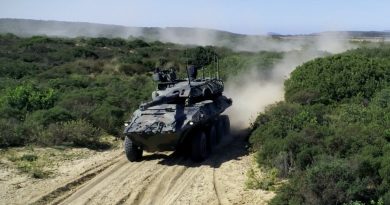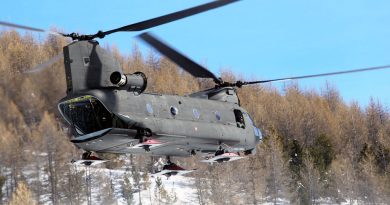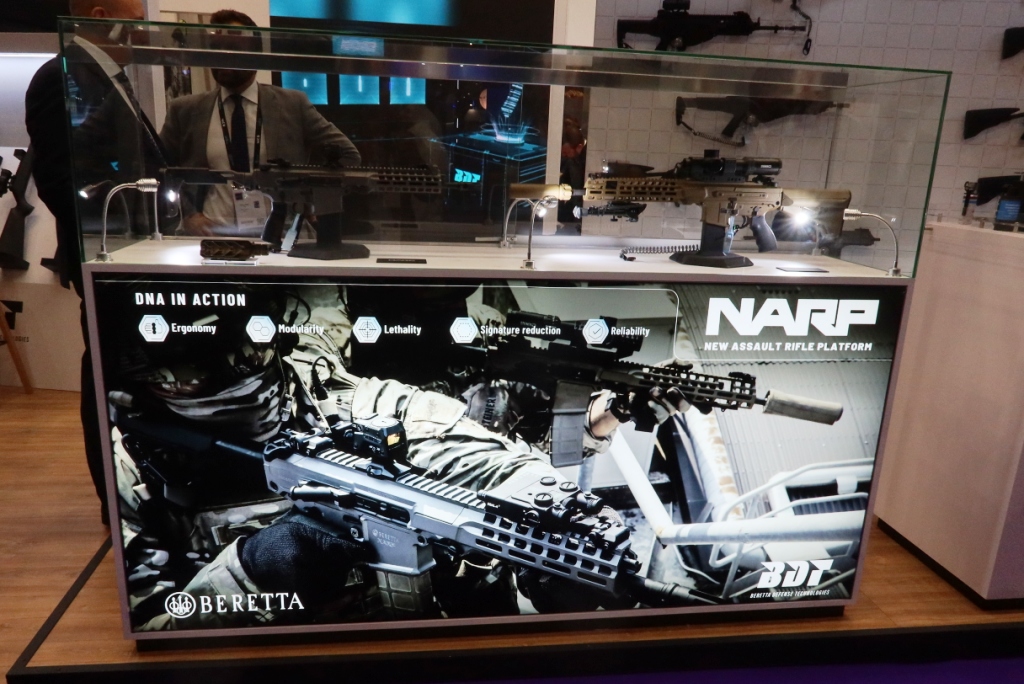
DSEI 2023 – Beretta unveils its New Assault Rifle Platform
At DSEI 2023 in London Beretta unveils its New Assault Rifle Platform, the 5.56×45 mm version being just the first of a series of long-barrel weapons that will see the light in the coming years
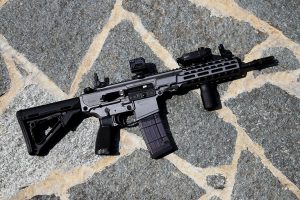
Having nearly 500 years of history and not feeling the weight of time, Beretta is still looking for innovation; this is the feeling when crossing the production line while heading to the company firing range, a wholly new series of CNC machinery aimed at increasing the company production capability having just been installed. EDR On-Line is about to test the last born of the Beretta military weapons portfolio, the 5,56×45 mm individual weapon issued from the New Assault Rifle Platform programme, NARP in short. This programme was launched five years ago; Phase 1 started in 2018, and led to the manufacturing of a functional demonstrator, to a first detailed ergonomic design, in-house laboratory tests being also carried out. In 2022 Phase 2 saw the production of the first prototypes, nine additional rifles being produced to be distributed to Italian Army operational regiments, the user having been in the loop since the beginning of the programme. In April 2023 the NARP programme overcame two major steps, the critical design review and the concept development and experimentation. According to Beretta sources, considerable modifications were adopted along the development path, some elements having been nearly totally redesigned. Intensive laboratory and operational trials continued while the Italian Army Staff was brought in the loop and company NATO qualification testing started.
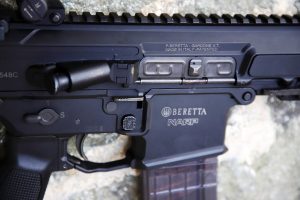
As said the acronym NARP refers to the programme and not to the weapon presented, which will be given a name in due course; however in this article we will refer to it as NARP, as for the time being this is the only definition available.
The first impression when looking at the NARP is to be in front of the umpteenth AR15-based assault rifle, however this proves untrue when getting into details. In fact the Beretta portfolio lacked an AR15-like weapon, something more and more required by customers as it allows exploiting muscle memory when shifting from one rifle to another. Eugene Stoner definitely did a great job in terms of ergonomy, the layout of the command push buttons and levers of his rifles having become the standard, albeit with continuous improvements.
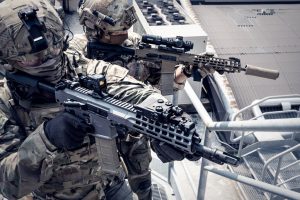
When starting working on the NARP programme Beretta considered the five NATO key bullets for small arms, ergonomy, reliability, modularity, lethality and signature reduction. The Beretta idea was that each of those elements should boost the others, in order to obtain a chain with the strongest possible links, the weakest being the one that in the end represents the chain strength. To do so Beretta developed its new assault rifle in close cooperation with the Italian Army.
Five years for developing a new assault rifle might seem too many, but we must consider that nearly two years were lost due to the pandemic. Once work in presence was back, rapid prototyping and 3D printing proved key in allowing to test in near-real time the ideas emerged from discussions on physical items, especially when working on ergonomics.
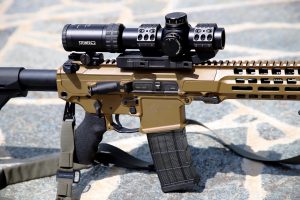
The NARP pistol grip is available with different angles, to suit the customers preference. But the key ergonomy issue was the location of command elements, which represent the interface between the operator and the rifle. Not only all commands are available for right- and left-handed soldiers, but these are also fully symmetric and operate in the same way. The safety lever has three positions, S-1-R for safe, semi-auto and automatic, with a 90° angle between each position; a mechanism does not allow the lever to remain half way between one position and the next, so if the angle is under 45° it will come back to the initial position and if it is over 45° it will switch to the next one.
Full compatibility with Italian Army personal equipment was thoroughly checked, which led for example to smoothing some angles in order to avoid entanglements. This was the case for the non-reciprocating T-Lever, which was carefully designed to minimise the risk of entanglement.
According to Beretta, the NARP has overcome all NATO tests, including that on stoppages, with around 15,000 MRBS (Mean Rounds Between Stoppages).
Designers unveiled that the choice went for a prismatic heavy bolt that ensures good reliability even when the weapon is fouled, the choice of the short stroke gas piston also reducing stoppage risks. The heavy bolt selection also led to a reduced firing rate, around 700 rounds per minute, which not only increases the weapon controllability when fired in automatic mode but also decreases wear and tear, increasing the weapon’s life. The NARP is fitted with a forward assist, to close the bolt should something go wrong, and with an ejection port cover that reduces dirt to enter the weapon when not in use.
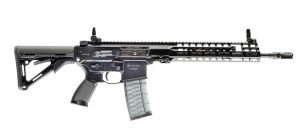
Another key design feature that increases controllability is the fact that the barrel axis is lower than the stock, which allows discharging all forces horizontally reducing the muzzle rise, and this could be felt also during shooting tests that EDR On-Line was allowed to do at the company range. This increases accuracy even when shooting in semi-auto at high repetition rate, as well as when the rifle is used in automatic mode. Another feature is that the upper and lower receivers, both produced in Al 7075 aeronautical aluminium, are steadily blocked thanks to a clearance recovery mechanism at the front swivel, and thanks to the high shoulders at the back. As for the trigger, this can be single or double action; Beretta did not unveil the trigger pull, which can be adapted to customers’ requirements, as well as the trigger travel. The company claims that the peculiar geometry adopted for the trigger system considerably reduces its sensibility to friction, hence increasing the repeatability of the shot.
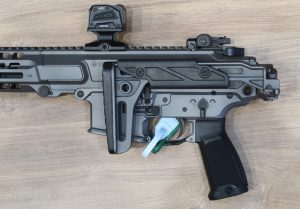
At Gardone Val Trompia all three weapons that were visible, one black, one grey and one sand, were fitted with the extendable stock. However at DSEI, well protected under a Plexiglas sphere, the NARP rifle is fitted with a Beretta-designed foldable stock. All know that AR15 rifles do not have foldable stocks, as the buffer spring goes into the stock itself. Beretta did it differently, the buffer spring being located in the upper receiver, a solution that according to Beretta also increases reliability. This allows having a very compact assault rifle, which however maintains full compatibility with all M4 accessories. The handguard is fitted with a full length STANAG 4694 Picatinny rail at the top, allowing installing various types of optical sights and night vision attachments.
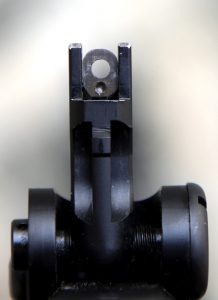
Standard sights provided by Beretta are of the flip-up type; the front one has two apertures, the wider being used for close quarter battle while the narrower is designed for targets at 200 metres, and is used for zeroing. This also allows a rough distance estimate of the target. The forend is also fitted with M-LOK slots on the sides and in the lower part. Beretta considered the M-LOK the best choice, having also been selected by the US SOCOM. This allows either direct fitting of accessories or the use of a Picatinny rail adapter. Beretta also developed a specific interface to allow installing its GLX160 40 mm underbarrel grenade launcher, which was designed for the ARX160 assault rifle. Quick Detach connectors are used to attach the sling.
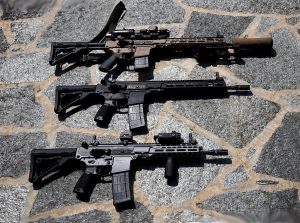
One of the rifles was fitted with an 11.5” barrel, which makes it part of the Short Barrel Rifles category, while the remaining two were fitted with a 14.5” barrel, one in General Purpose Rifle configuration and the second in a Designated Marksman Rifle configuration, fitted with bipod and telescopic sight, a longer barrel being considered for the SDR version. The forend is of course available in two different lengths to fit the barrel. The NARP modularity allows to easily configuring the rifle for semi-auto only firing mode, which might well be the case for the SDR. The customer can also chose the safety, which is available both with the cocked or uncocked hammer. The short barrel version is 812 mm long with extended telescopic stock and 730 mm with collapsed stock, while the 14.5” version is 888 mm long with extended stock and 806 mm with collapsed stock. The NARP rifle is quite slim, width being only 78 mm. With empty polymer magazine the mass is around 3.3 kg for the longer version and 3.2 kg for the shorter one. As the foldable stock shown at DSEI is a prototype, Beretta didn’t provided metrics for the NARP rifle equipped with that accessory, as these might vary following user trials.
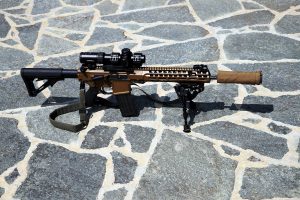
Reducing signature was another key design parameter, and Beretta adopted a three-lug flash hider that is considered the most effective design. The barrel muzzle is fitted with a standard ½”x28 thread that allows adopting any type of suppressor, however Beretta proposes its B-Silent suppressor, purposely designed, for the time being for the 5.56 mm calibre, and manufactured in Inconel 718 stainless steel using additive manufacturing technologies. It features a Quick Detachment attachment on the flash hider with a conical alignment system and a ratchet retention device. Five concentric expansion chambers ensure backpressure retention, each being separated from the next one by a truncated cone baffle with shaped surfaces designed to increase turbulence. Of course when using the suppressor the gas impingement selector at the forward end of the gas cylinder must be rotated on the “S” position, while for standard use it is in the “N” position.
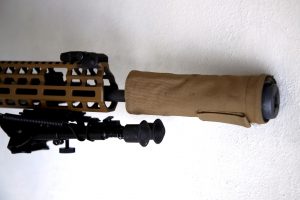
As for thermal signature Beretta said that the weapon is designed to maintain temperatures below 40°C after shooting 90 rounds in a row, which also allows touching hot parts without gloves. As for stress tests, the NARP rifle was tested shooting eight magazines, 240 rounds, in a row. Quick magazine change is favoured by the design of the magazine well which sides are angled at around 45°, the rifle accepting all types of STANAG 4179 metallic or polymer magazines.
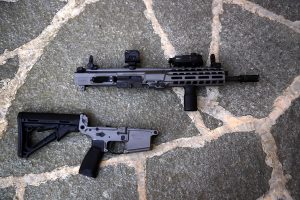
Field stripping is very simple, as the disassembly of the weapon for cleaning or for solving malfunctions does not need tools, while all pins are captive, which avoids losing them, a key factor especially at night. The same applies at armoury level, where wrong assembly is prevented by design.
When EDR On-Line was shown the new rifle, the nine Phase 2 prototypes were in the hands of Italian Army soldiers for operational evaluation, while the company already concluded all in-house NATO tests.
As said, the first member of the NARP family is chambered for the 5.56 mm NATO cartridge, Beretta already considering evolving the weapon in other calibres such as .300 Blackout, 6.5 mm Creedmoor, and 7.62×51 mm.
According to the timeline, in 2024 Beretta will initiate low rate initial production deliveries and will start the design of the other family members, as the 5.56×45 mm assault rifle seen in Gardone Valtrompia is only the starting point of a family that will see the NARP be developed in many versions and variants, with six different length of barrels, 7 inch (178 mm), 11.5 inch (292 mm), 14.5 inch (368 mm), 16 inch (406 mm), 18 inch (457 mm) and finally 20 inch (508). The 7-inch barrel will be fitted only to the Close Quarter Battle (CQB) rifle using the 7.62×35 mm or .300 Blackout subsonic ammunition. The NATO 5.56×45 mm NARP family will consist of four versions, CQB (11.5 inch), Assault Rifle, AR in short (14,5 inch), Infantry Automatic Rifle (16 inch), and Squad Designated Marksman Rifle or S-DMR (18 inch). The calibre declined in the most numerous versions is the NATO 7.62×51 mm, with five different rifles; CQB (11. 5 inch), Battle Rifle (BR) with either 14.5 inch or 16 inch barrel, and Designated Marksman Rifle (DMR) available with 18 inch or 20 inch barrels. Three versions will be available chambered for the 6.5 mm Creedmoor or the 6.8 mm round, respectively BR (16 inch), DMR (18 inch) and Semi Automatic Sniper Rifle (20 inch), for a grand total of 16 different versions.
The NARP rifle is “designed for combat” as a key person within the design team, a former SF operator, defined it. Beretta clearly aims not only at the national customer needs but also at the export market, the NARP family of rifles having been designed since inception for international customers.
Photos courtesy Beretta and P. Valpolini


